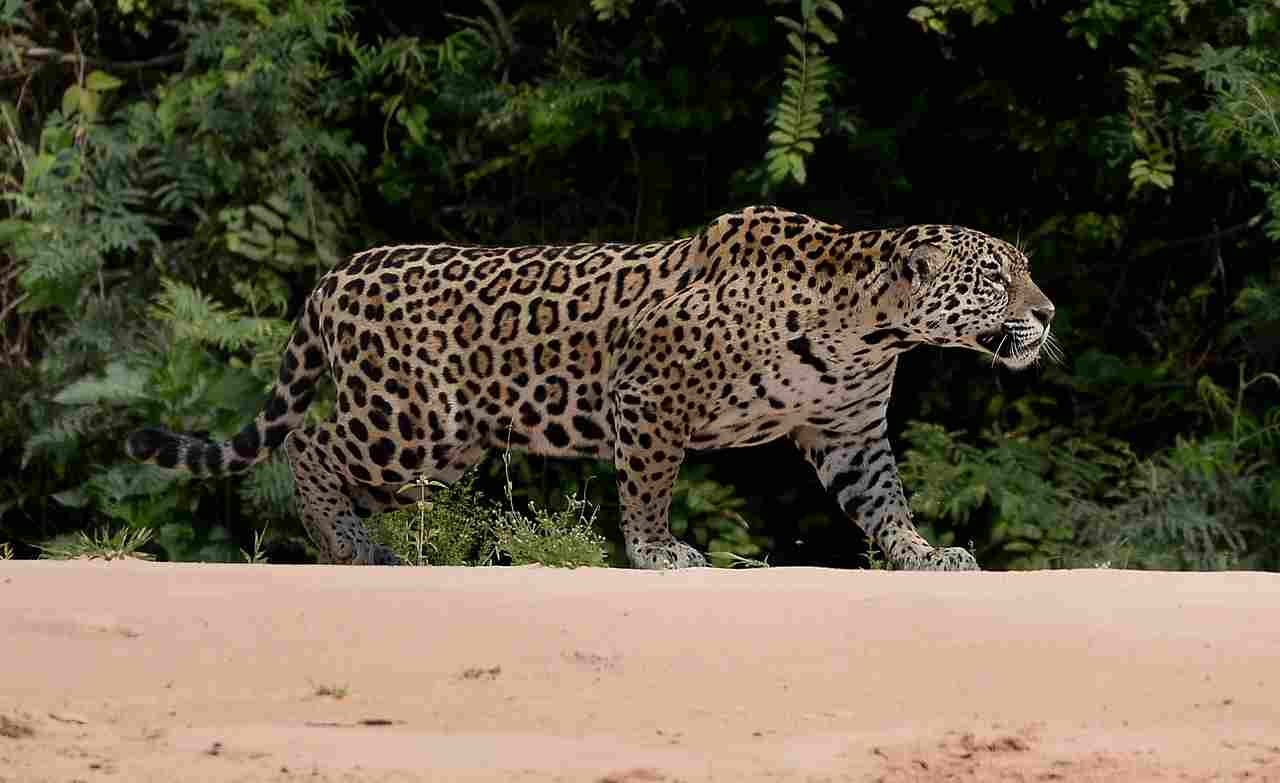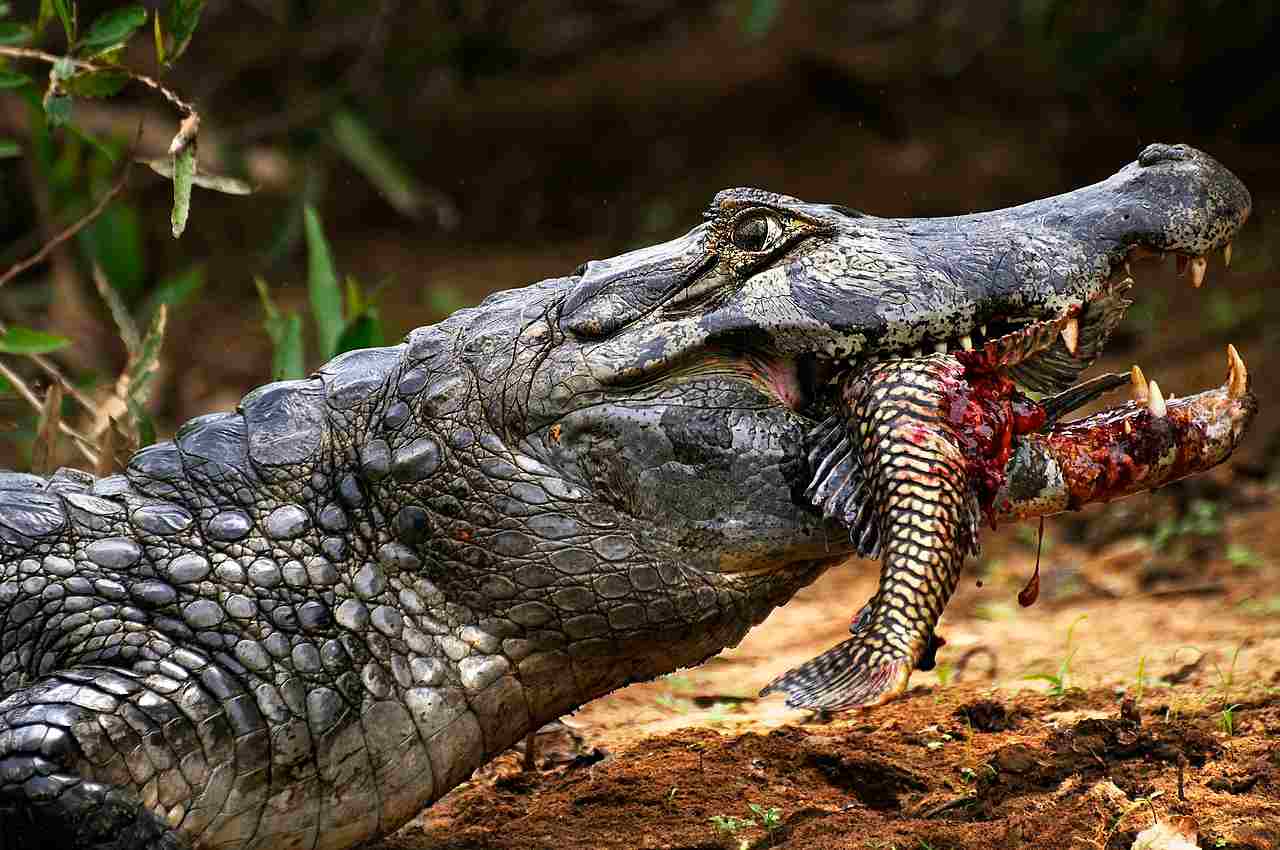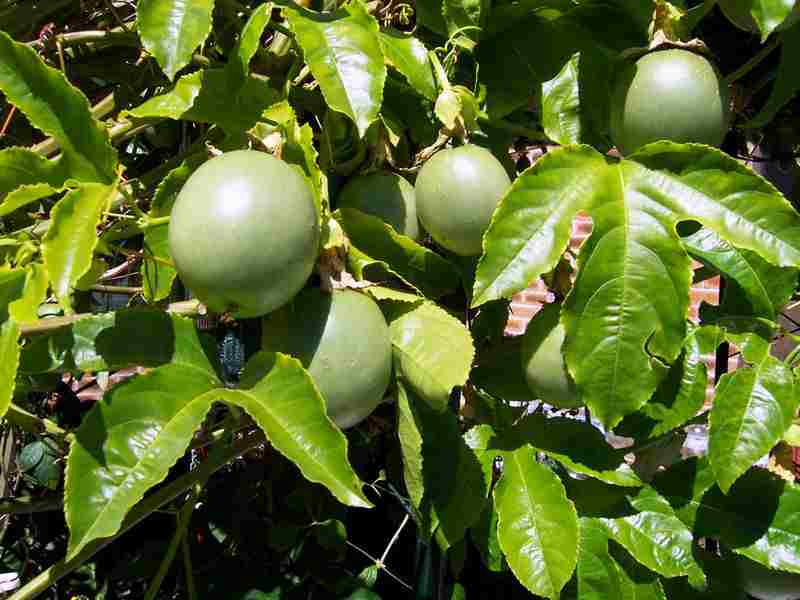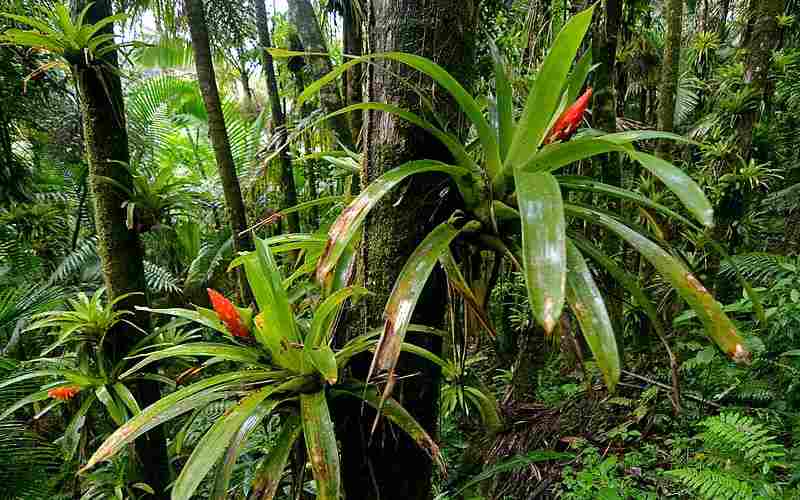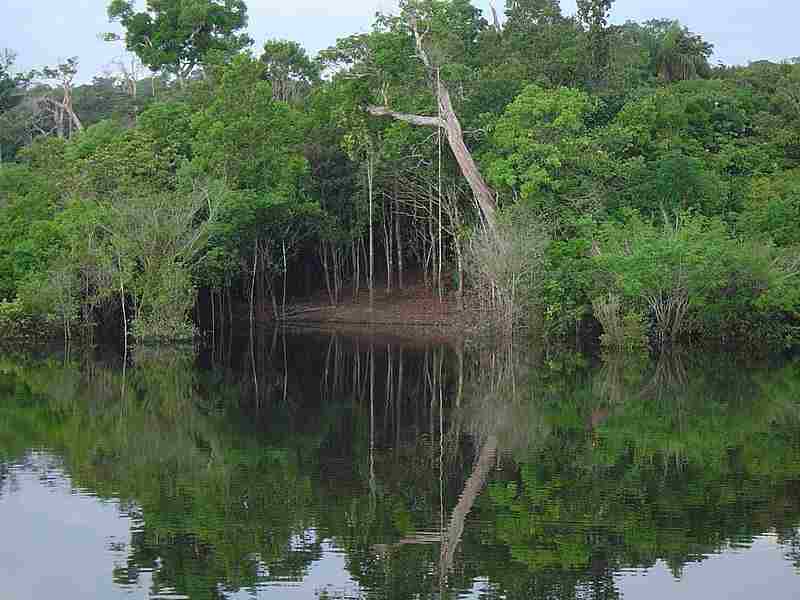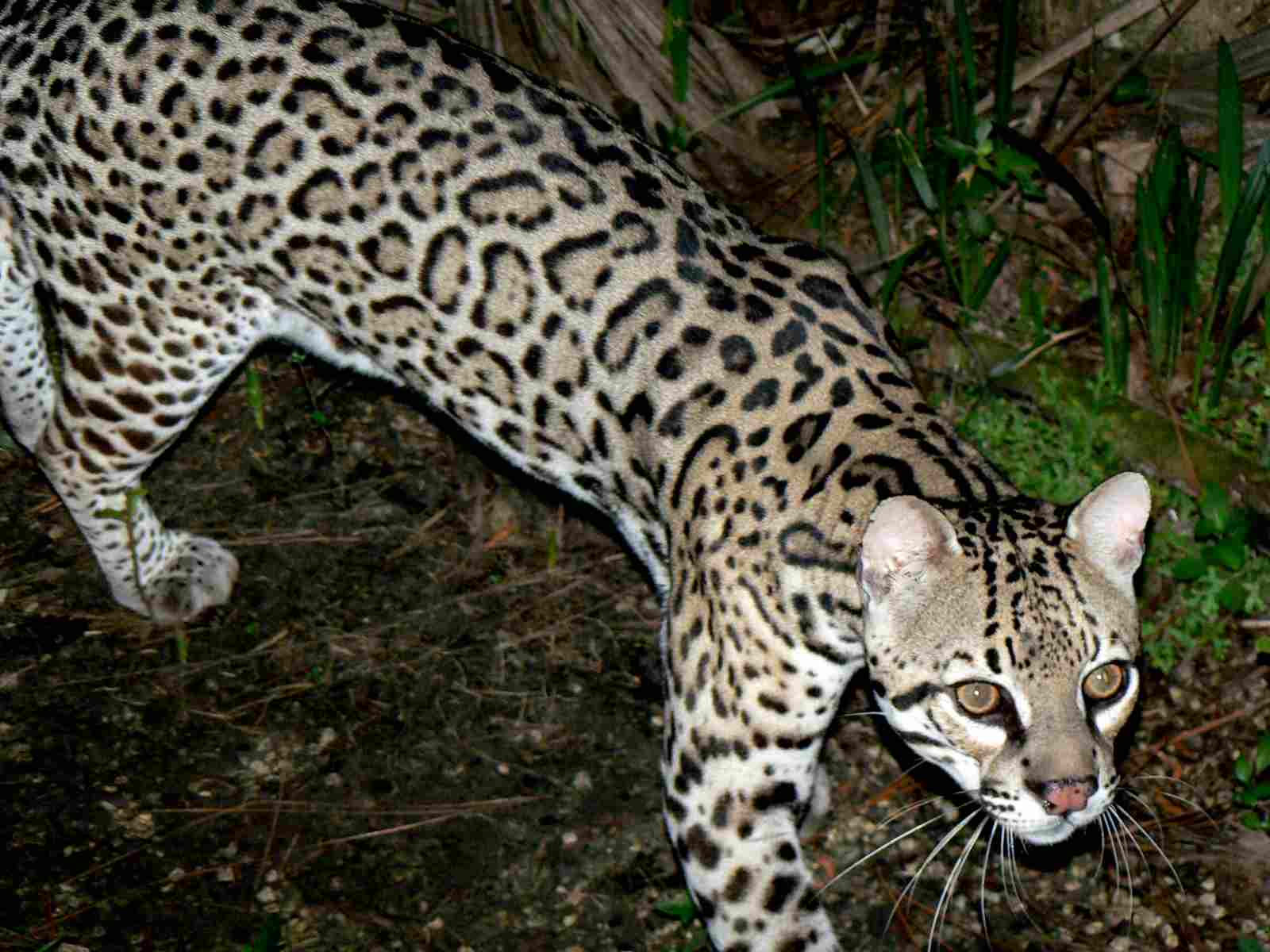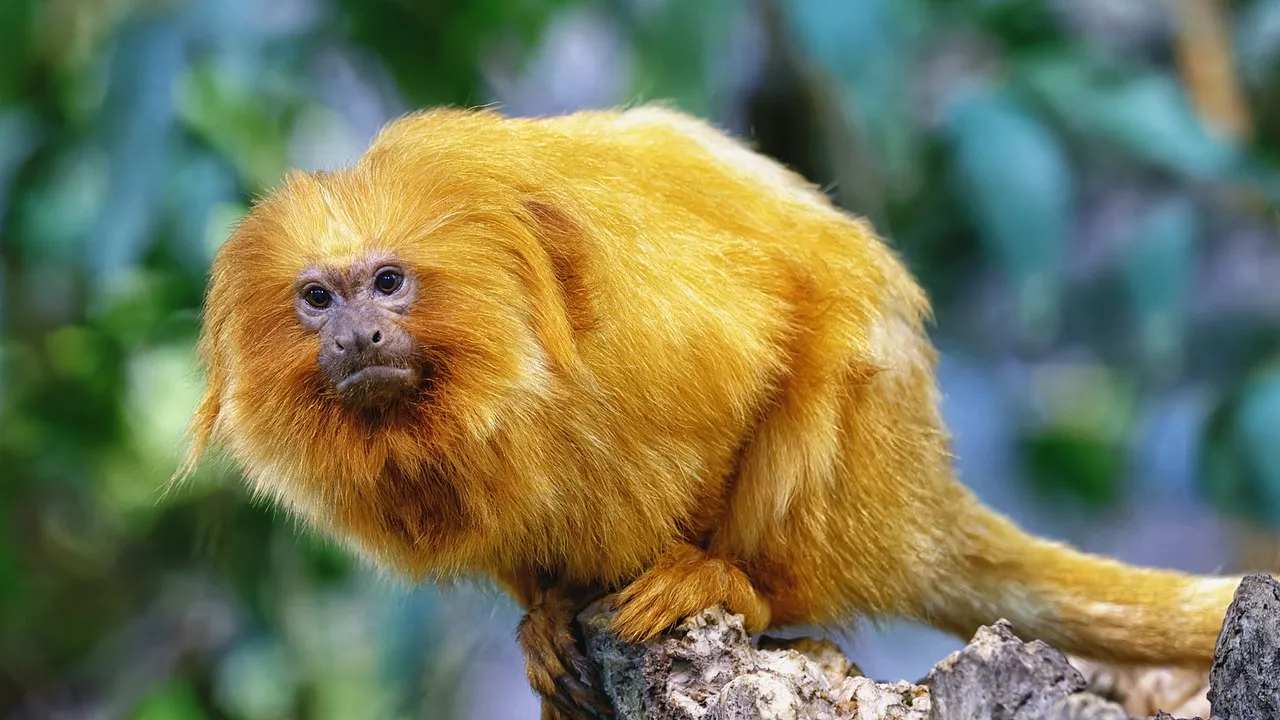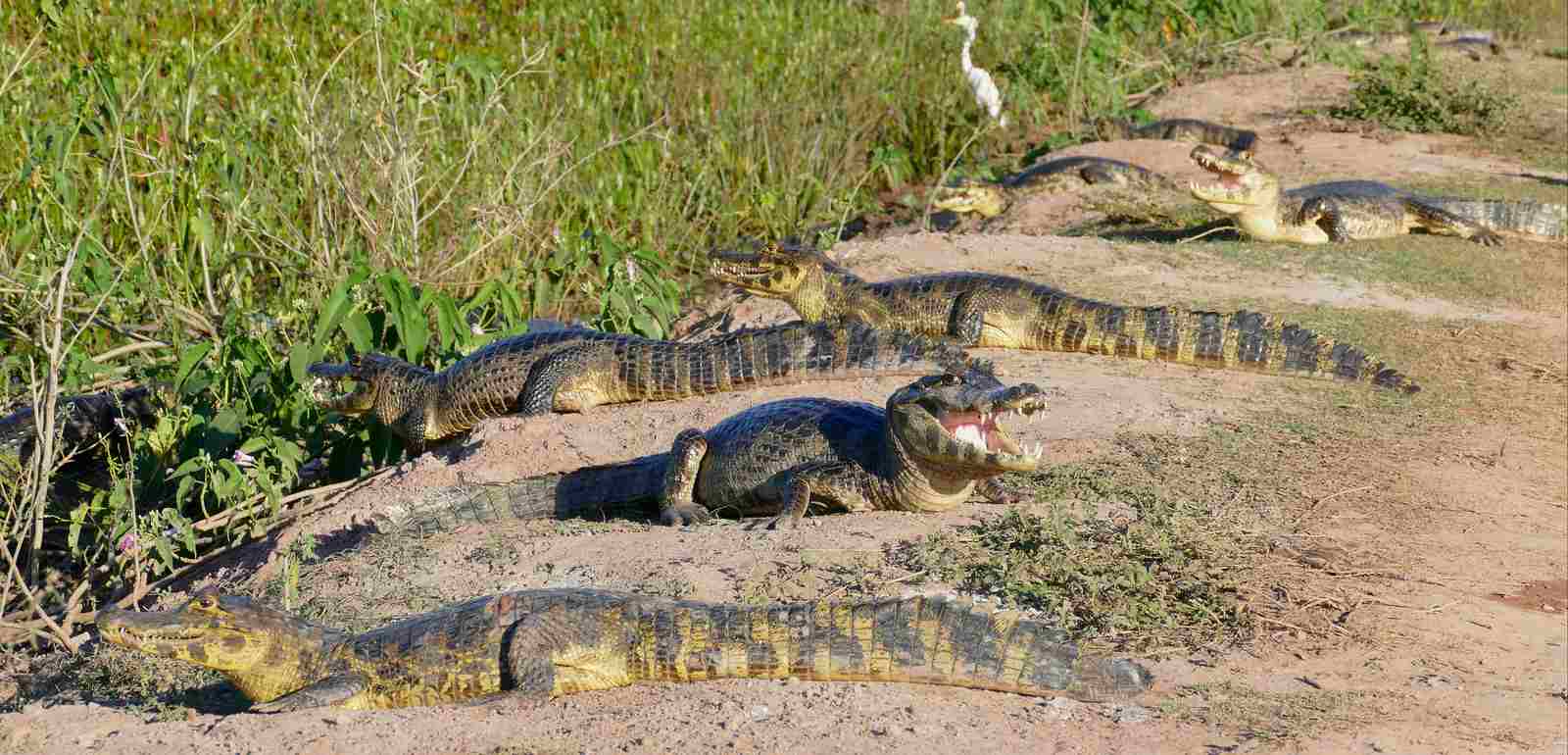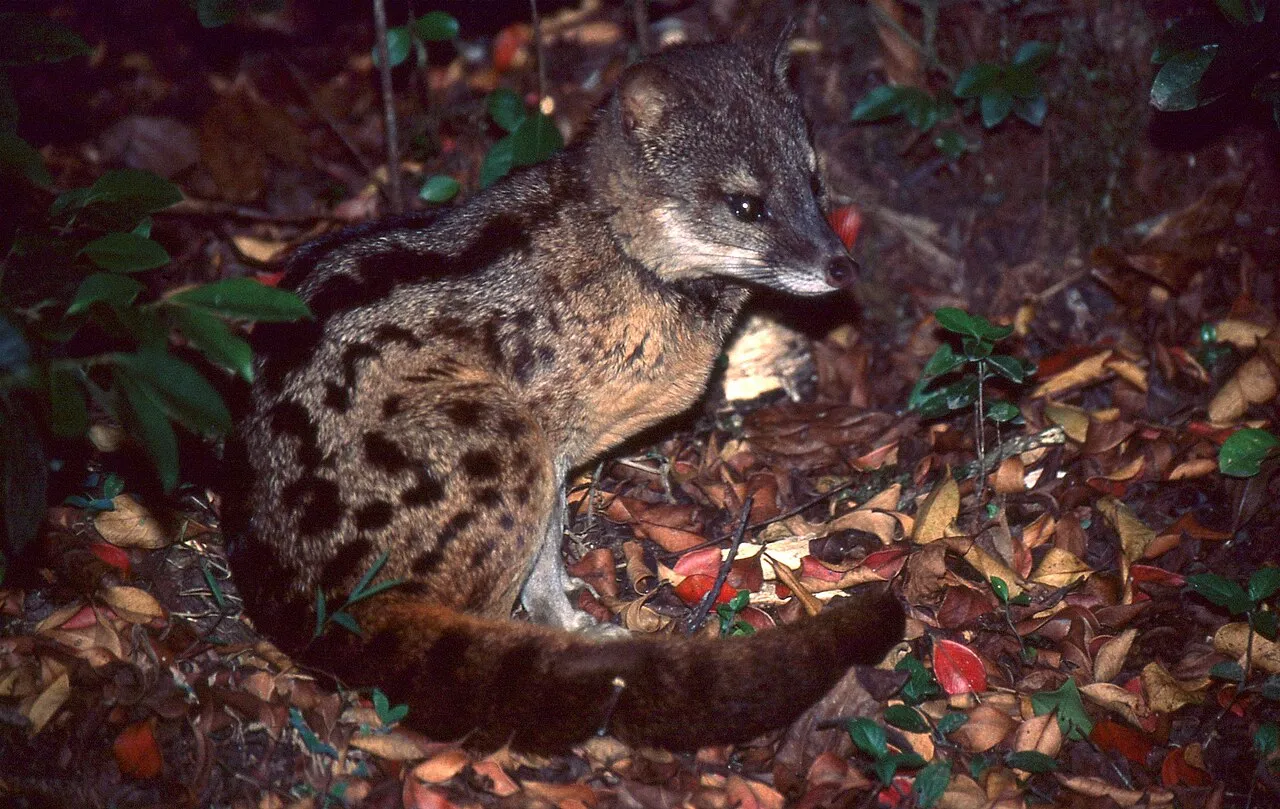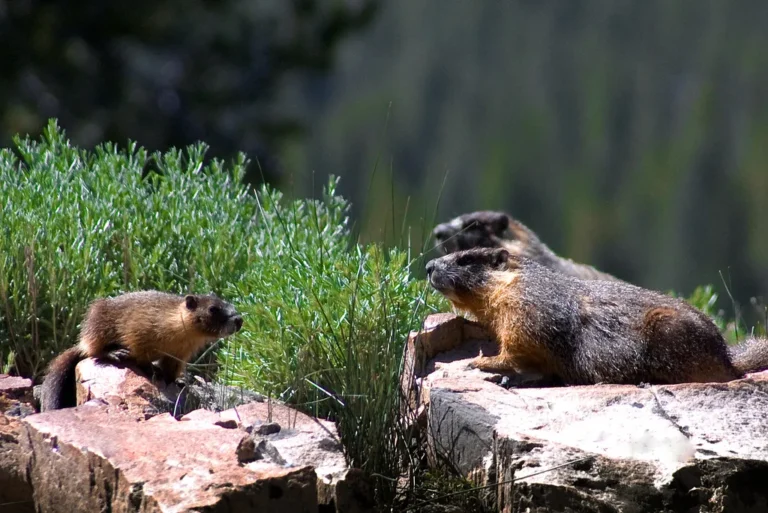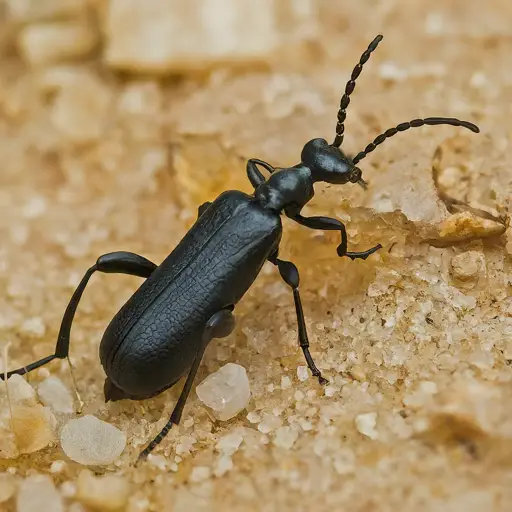11+ Carnivores in South America and Their Characteristics
Examples of carnivores in South America are caimans, black tarantulas, and red-bellied piranhas. These carnivores play crucial roles in their ecosystems, from regulating prey populations to controlling insect pests. While some, like caimans, are semi-aquatic predators found in waterways, others, like black tarantulas, inhabit the dense rainforests. Despite their diverse habitats and hunting strategies, all these carnivores face threats such as habitat loss and human-wildlife conflicts, highlighting the importance of conservation efforts to protect them and their ecosystems.
1. Caiman
Caimans, members of the Alligatoridae family, are formidable carnivores found throughout South America’s waterways, including the Amazon Basin, the Pantanal, and various rivers and marshes. These semi-aquatic reptiles resemble alligators, with broad snouts and armored bodies, making them efficient hunters in both water and on land. Despite their resemblance to their larger relatives, caimans are typically smaller in size, with the spectacled caiman being the most common species.
As apex predators, caimans play a crucial role in maintaining the ecological balance of their habitats by regulating the population of prey species such as fish, birds, and small mammals. Their powerful jaws are lined with sharp teeth, capable of delivering a crushing bite to immobilize their prey. Caimans are opportunistic feeders, consuming anything from fish and amphibians to birds and even small mammals that venture too close to the water’s edge.
Caimans exhibit fascinating behaviors such as basking in the sun to regulate their body temperature, especially during cooler periods. They are also known for their distinctive vocalizations, including low grunts and hisses, used for communication and territorial displays. Despite their impressive hunting abilities, caimans face threats from habitat loss, pollution, and illegal hunting for their skins. Conservation efforts are crucial to ensure the survival of these iconic carnivores and the ecosystems they inhabit.
2. Black Tarantula
The black tarantula, native to the dense rainforests and remote regions of South America, is a formidable carnivore renowned for its imposing size and intimidating appearance. These arachnids belong to the Theraphosidae family and are among the largest species of tarantulas in the world. Despite their name, black tarantulas can exhibit a range of colors, including dark brown, deep red, or even iridescent blue hues.
As ambush predators, black tarantulas primarily prey on a variety of insects, small vertebrates, and occasionally other spiders. They employ stealth and patience to capture their prey, using their keen senses to detect vibrations and movements in their surroundings. With their powerful fangs and venomous bite, black tarantulas can immobilize their victims before consuming them whole or injecting digestive enzymes to break down their prey’s tissues.
Black tarantulas are solitary creatures, typically inhabiting burrows or constructing silk-lined retreats beneath rocks and fallen logs. They are nocturnal hunters, relying on their acute sense of touch and vibration detection to navigate their surroundings in search of prey. Despite their fearsome reputation, black tarantulas play a vital role in controlling insect populations and maintaining the ecological balance of their habitats.
Conservation efforts are essential to protect black tarantula populations from habitat destruction, illegal collection for the exotic pet trade, and climate change-induced habitat loss. By preserving their natural habitats and raising awareness about their ecological importance, we can ensure the survival of these iconic carnivores for future generations to admire and study.
3. Venus Fly Trap
The Venus flytrap, a carnivorous plant native to the wetlands and bogs of the southeastern United States, is renowned for its unique method of capturing and digesting insects for nutrients. While not exclusive to South America, it is a fascinating example of carnivorous flora found in various regions worldwide.
With its distinctive hinged trap and trigger-sensitive hairs, the Venus flytrap lures unsuspecting insects into its grasp, where they become trapped and eventually digested. This carnivorous plant relies on a combination of visual and tactile cues to distinguish between potential prey and false alarms, ensuring efficient energy expenditure.
The Venus flytrap supplements its nutrient intake from the nutrient-poor soils of its native habitat by preying on a variety of insects, including flies, ants, and spiders. Once trapped, the plant secretes digestive enzymes to break down its prey’s soft tissues, extracting essential nutrients such as nitrogen and phosphorus for growth and reproduction.
Despite its unique adaptations for carnivory, the Venus flytrap faces threats from habitat destruction, illegal collection, and poaching for the horticultural trade. Conservation efforts are crucial to protect the fragile ecosystems where these carnivorous plants thrive and ensure their continued survival in the wild.
4. Red-Bellied Piranha
The red-bellied piranha, native to the rivers and lakes of South America, is a fearsome carnivore renowned for its razor-sharp teeth and voracious feeding behavior. Belonging to the Serrasalmidae family, red-bellied piranhas are opportunistic predators that hunt in schools, using their keen sense of smell and lateral line system to detect vibrations in the water.
Contrary to popular belief, red-bellied piranhas are not mindless killers but rather efficient scavengers and hunters that primarily prey on injured or weakened animals. Their sharp teeth and powerful jaws allow them to tear flesh from their prey with remarkable speed and precision, making them formidable predators in their aquatic environments.
Red-bellied piranhas are essential components of their ecosystems, playing a crucial role in regulating the population of fish and maintaining the health of freshwater ecosystems. However, habitat destruction, overfishing, and pollution threaten their populations in many regions, highlighting the importance of conservation efforts to protect these iconic carnivores and their habitats.
5. Vampire Bat
The vampire bat, native to Central and South America, is a fascinating yet notorious carnivore known for its unique feeding behavior. Belonging to the family Phyllostomidae, vampire bats are the only mammals in the world that feed exclusively on blood, earning them a fearsome reputation among humans and livestock alike.
These nocturnal creatures primarily prey on the blood of various animals, including cattle, birds, and even humans. Using their razor-sharp incisors, vampire bats make small incisions in their victims’ skin while they sleep, then lap up the blood using their specialized tongues. Contrary to popular belief, vampire bats do not suck blood but rather use their tongues to lap up the blood that pools from the wound.
Vampire bats have evolved unique adaptations to facilitate their blood-feeding lifestyle, including heat sensors in their noses to locate blood vessels and anticoagulants in their saliva to prevent blood clotting. They often feed in colonies, roosting in caves, hollow trees, or abandoned buildings during the day and venturing out at night to hunt for prey.
While vampire bats play a crucial role in controlling insect populations and nutrient recycling in their ecosystems, they also pose a risk to livestock due to the potential transmission of diseases such as rabies. Efforts to mitigate human-wildlife conflicts and promote coexistence are essential for the conservation of vampire bat populations and the preservation of their ecological role.
6. Colombian Weasel
The Colombian weasel, also known as the Don Felipe’s weasel, is a rare and elusive carnivore endemic to the cloud forests of the Andes Mountains in Colombia. Belonging to the Mustelidae family, Colombian weasels are small, slender mammals with long bodies, short legs, and bushy tails, adapted for agile movement through dense vegetation.
Despite their small size, Colombian weasels are efficient predators, preying on a variety of small vertebrates and insects. Their diet may include rodents, birds, reptiles, and invertebrates found within their montane forest habitats. With keen senses and sharp claws, Colombian weasels are adept hunters capable of pursuing prey both on the ground and in the trees.
Due to their secretive nature and remote habitat, Colombian weasels are poorly studied, and much of their behavior and ecology remain unknown. However, habitat loss and fragmentation pose significant threats to their survival, as agricultural expansion and human development encroach upon their forest habitats. Conservation efforts focused on preserving intact forest ecosystems and mitigating human impacts are essential for ensuring the long-term survival of Colombian weasels and other endemic species of the Andes.
7. Green Anaconda
The green anaconda, native to the swamps, marshes, and slow-moving rivers of the Amazon and Orinoco basins in South America, is one of the largest and most powerful snakes in the world. Belonging to the Boidae family, green anacondas are semi-aquatic constrictors that spend much of their time submerged in water, ambushing prey such as fish, amphibians, birds, and mammals that venture too close to the water’s edge.
With their massive size and muscular bodies, green anacondas are formidable predators capable of overpowering large prey with ease. They employ a hunting strategy known as constriction, where they coil their bodies around their prey and squeeze with immense force, suffocating them before consuming them whole. Despite their reputation as fearsome predators, green anacondas are generally non-aggressive towards humans and will typically avoid confrontation if given the opportunity.
Green anacondas play a crucial role in maintaining the ecological balance of their aquatic habitats by controlling populations of prey species and acting as apex predators. However, habitat destruction, poaching for their skins, and conflicts with humans pose significant threats to their survival in many regions. Conservation efforts aimed at protecting their wetland habitats and regulating trade in anaconda skins are essential for ensuring the continued existence of these iconic carnivores in South America’s ecosystems.
8. Jaguar
The jaguar, revered as the apex predator of the South American rainforests, is an iconic carnivore known for its strength, agility, and striking beauty. With its distinctive rosette-patterned coat and powerful build, the jaguar cuts an imposing figure as it prowls through the dense jungles of Central and South America.
As opportunistic hunters, jaguars have a diverse diet that includes a wide range of prey species, including deer, peccaries, capybaras, and even caimans and anacondas. They are solitary and elusive hunters, relying on stealth and ambush tactics to stalk and pounce on their unsuspecting prey with remarkable speed and precision. With their powerful jaws and sharp claws, jaguars deliver a lethal bite to immobilize their victims before dragging them off to consume.
Jaguars play a crucial role in regulating the populations of their prey species and shaping the structure of their ecosystems. However, habitat loss, fragmentation, and human-wildlife conflicts pose significant threats to their survival, particularly in regions where deforestation and agricultural expansion are rampant. Conservation efforts focused on preserving intact forest habitats, establishing protected areas, and promoting coexistence with local communities are essential for ensuring the long-term survival of jaguars in the wild.
9. Puma
The puma, also known as the cougar or mountain lion, is a widespread and adaptable carnivore found throughout the Americas, including various regions of South America. With its sleek, muscular body and keen senses, the puma is a formidable predator capable of thriving in a diverse range of habitats, from dense forests and mountainous terrain to arid deserts and grasslands.
Pumas are solitary hunters that primarily prey on deer, wild boar, guanacos, and smaller mammals such as rodents and hares. They employ stealth and ambush tactics to stalk their prey, relying on their excellent vision, hearing, and sense of smell to locate and close in on their targets without being detected. With powerful hind legs and sharp claws, pumas can deliver a swift and lethal pounce, quickly dispatching their prey with a bite to the neck or throat.
Despite their adaptability and wide distribution, pumas face threats from habitat loss, fragmentation, and human-wildlife conflicts in many regions. Encroachment into their habitats by human development, as well as retaliatory killings due to conflicts with livestock, pose significant challenges to their survival. Conservation efforts focused on protecting their natural habitats, establishing wildlife corridors, and promoting coexistence with local communities are essential for ensuring the long-term survival of pumas in South America.
10. Magellanic Owl
The Magellanic owl, also known as the Magellanic horned owl, is a majestic and elusive nocturnal carnivore found in the southern regions of South America, including Argentina, Chile, and parts of Patagonia. With its distinctive tufted ears, large orange eyes, and cryptic plumage, the Magellanic owl is well-adapted to its forested habitats, where it hunts under the cover of darkness.
Magellanic owls are skilled hunters that prey on a variety of small mammals, birds, reptiles, and insects found within their forested habitats. They rely on their acute hearing and silent flight to locate and capture their prey with precision, swooping down from perches or gliding silently through the forest canopy to surprise their victims. With powerful talons and a razor-sharp beak, Magellanic owls dispatch their prey quickly and efficiently before carrying it off to a secluded roost to consume.
Despite their enigmatic nature and vital role in controlling populations of small mammals and insects, Magellanic owls face threats from habitat loss, deforestation, and human disturbance in many regions. Conservation efforts aimed at preserving intact forest ecosystems, establishing protected areas, and raising awareness about the importance of these majestic birds are essential for ensuring their continued survival in the wild.
11. American Kestrel
The American kestrel, also known as the sparrow hawk, is a small yet charismatic carnivorous bird of prey found throughout North and South America. With its striking plumage, including a distinctive rufous back and tail, black facial markings, and white underparts with black spots, the American kestrel is easily recognizable as it hovers and hunts in open habitats such as grasslands, savannas, and agricultural fields.
Despite its small size, the American kestrel is an agile and efficient hunter that preys on a variety of small vertebrates and insects. Its diet includes rodents, small birds, lizards, grasshoppers, and other insects, which it captures using a combination of aerial agility, keen eyesight, and rapid dives or swoops. With its sharp talons and hooked beak, the American kestrel dispatches its prey quickly before carrying it off to a perch to consume.
American kestrels play a crucial role in controlling populations of agricultural pests and small rodents, making them valuable allies to farmers and landowners. However, habitat loss, pesticide use, and human disturbance pose threats to their populations in many regions. Conservation efforts focused on preserving open habitats, providing nesting sites, and reducing human impacts are essential for ensuring the long-term survival of American kestrels in South America.
12. Andean Condor
The Andean condor, a symbol of power and majesty in the Andean regions of South America, is one of the largest flying birds in the world. With its massive wingspan, which can exceed three meters (10 feet), and distinctive black plumage with white patches on its wings and neck, the Andean condor is a sight to behold as it soars gracefully through the skies above the Andes Mountains.
As scavengers, Andean condors play a vital role in their ecosystems by consuming carrion and cleaning up decaying organic matter. They possess keen eyesight and an acute sense of smell, allowing them to locate carcasses from great distances and descend upon them to feed. With their powerful beaks and strong neck muscles, Andean condors can tear through tough hides and flesh to access nutrient-rich organs and tissues.
Despite their cultural significance and ecological importance, Andean condors face threats from habitat loss, poisoning, and collisions with power lines in many regions. Conservation efforts aimed at preserving their natural habitats, reducing human-wildlife conflicts, and raising awareness about the importance of these iconic birds are essential for ensuring their continued survival in the wild.
13. Black-Collared Hawk
The black-collared hawk, native to the wetlands, marshes, and rivers of South America, is a striking and adaptable carnivorous bird of prey known for its distinctive black collar and bright yellow legs. With its streamlined body, sharp talons, and keen eyesight, the black-collared hawk is a formidable hunter that preys on a variety of aquatic and terrestrial animals found within its wetland habitats.
Black-collared hawks primarily hunt for fish, frogs, crustaceans, and small mammals, which they capture using a combination of aerial dives, stealthy ambushes, and shallow wading in the water. They possess powerful legs and sharp talons, which they use to grasp and immobilize their prey before carrying it off to a nearby perch or nest to consume.
Despite their adaptability and wide distribution, black-collared hawks face threats from habitat loss, pollution, and human disturbance in many regions. Conservation efforts focused on preserving intact wetland ecosystems, regulating water quality and quantity, and reducing human impacts are essential for ensuring the long-term survival of black-collared hawks and the ecological integrity of their habitats.
*Summary
-
Caiman:
-
Found in South American waterways.
-
Semi-aquatic reptiles resembling alligators.
-
Opportunistic hunters, feeding on fish, birds, and small mammals.
-
Play a crucial role in ecosystem balance.
-
Threatened by habitat loss and illegal hunting.
-
-
Black Tarantula:
-
Large spiders found in South American rainforests.
-
Prey on insects and small vertebrates.
-
Employ stealth and patience to capture prey.
-
Threatened by habitat destruction and illegal collection.
-
-
Venus Fly Trap:
-
Carnivorous plant native to southeastern United States.
-
Captures and digests insects for nutrients.
-
Relies on visual and tactile cues to distinguish prey.
-
Faces threats from habitat destruction and illegal collection.
-
-
Red-Bellied Piranha:
-
Aquatic carnivores found in South American rivers.
-
Feed on fish, mammals, and birds.
-
Employ razor-sharp teeth and powerful jaws for hunting.
-
Essential for maintaining freshwater ecosystem balance.
-
Threatened by habitat loss and overfishing.
-
-
Vampire Bat:
-
Blood-feeding mammals found in Central and South America.
-
Prey on various animals, including livestock and humans.
-
Unique adaptations for blood-feeding, including heat sensors and anticoagulants.
-
Play a role in controlling insect populations.
-
Face threats from habitat loss and human-wildlife conflicts.
-
-
Colombian Weasel:
-
Rare carnivore endemic to Colombian cloud forests.
-
Prey on small vertebrates and insects.
-
Adapted for agile movement through dense vegetation.
-
Faces threats from habitat loss and fragmentation.
-
-
Green Anaconda:
-
Large constrictor snakes found in South American wetlands.
-
Prey on fish, amphibians, birds, and mammals.
-
Employ constriction to subdue prey.
-
Play a role in regulating prey populations.
-
Threatened by habitat destruction and poaching.
-
-
Jaguar:
-
Apex predators of South American rainforests.
-
Hunt a variety of prey, including deer, peccaries, and caimans.
-
Employ stealth and ambush tactics for hunting.
-
Play a crucial role in ecosystem balance.
-
Threatened by habitat loss and human-wildlife conflicts.
-
-
Puma:
-
Adaptable carnivores found throughout the Americas.
-
Prey on deer, rodents, and smaller mammals.
-
Employ stealth and agility for hunting.
-
Face threats from habitat loss and human-wildlife conflicts.
-
-
Magellanic Owl:
-
Nocturnal carnivores found in southern South America.
-
Prey on small mammals, birds, and insects.
-
Employ acute hearing and silent flight for hunting.
-
Face threats from habitat loss and human disturbance.
-
-
American Kestrel:
-
Small birds of prey found throughout the Americas.
-
Prey on small vertebrates and insects.
-
Employ aerial agility and keen eyesight for hunting.
-
Play a role in controlling agricultural pests.
-
Threatened by habitat loss and pesticide use.
-
-
Andean Condor:
-
Large scavenging birds found in the Andes Mountains.
-
Consume carrion and clean up decaying organic matter.
-
Play a vital role in ecosystem balance.
-
Threatened by habitat loss and human disturbance.
-
-
Black-Collared Hawk:
-
Carnivorous birds of prey found in South American wetlands.
-
Prey on fish, frogs, and small mammals.
-
Employ aerial dives and stealth for hunting.
-
Threatened by habitat loss and pollution.
-
| Carnivore | Summary |
| Caiman |
Found in South American waterways. Semi-aquatic reptiles resembling alligators. Opportunistic hunters.
|
| Black Tarantula |
Large spiders found in South American rainforests. Prey on insects and small vertebrates. Employ stealth.
|
| Venus Fly Trap |
Carnivorous plant native to southeastern United States. Captures and digests insects for nutrients.
|
| Red-Bellied Piranha |
Aquatic carnivores found in South American rivers. Employ razor-sharp teeth for hunting. Essential for ecosystem balance.
|
| Vampire Bat |
Blood-feeding mammals found in Central and South America. Play role in controlling insect populations.
|
| Colombian Weasel |
Rare carnivore endemic to Colombian cloud forests. Prey on small vertebrates and insects.
|
| Green Anaconda |
Large constrictor snakes found in South American wetlands. Prey on fish, amphibians, birds, and mammals.
|
| Jaguar |
Apex predators of South American rainforests. Hunt a variety of prey. Threatened by habitat loss.
|
| Puma |
Adaptable carnivores found throughout the Americas. Prey on deer, rodents, and smaller mammals.
|
| Magellanic Owl |
Nocturnal carnivores found in southern South America. Prey on small mammals, birds, and insects.
|
| American Kestrel |
Small birds of prey found throughout the Americas. Play role in controlling agricultural pests.
|
| Andean Condor |
Large scavenging birds found in the Andes Mountains. Play vital role in ecosystem balance. Threatened by habitat loss.
|
| Black-Collared Hawk |
Carnivorous birds of prey found in South American wetlands. Prey on fish, frogs, and small mammals.
|
Related FAQs
Q: Are caimans dangerous to humans? A: While caimans are carnivores and capable predators, they typically avoid confrontation with humans. Attacks on humans are rare and usually occur when humans enter their territory or disturb them, especially during mating or nesting season. However, caution should always be exercised around wild caimans, especially in areas where they are known to inhabit.
Q: Can black tarantulas be kept as pets? A: Yes, some species of black tarantulas are kept as pets by enthusiasts. However, it’s essential to research the specific care requirements of the species before keeping one as a pet. Tarantulas have specific environmental and dietary needs that must be met to ensure their health and well-being. Additionally, some species may have potent venom, so handling should be done with care.
Q: Are Venus fly traps easy to care for? A: Venus fly traps can be relatively easy to care for if their basic needs are met. They require a humid environment, plenty of sunlight, and moist, acidic soil. They also need to be watered with distilled water or rainwater, as tap water may contain minerals that can harm them. While they do not require regular feeding, they may benefit from occasional feeding with small insects to supplement their nutrient intake.
Q: Are red-bellied piranhas dangerous to humans? A: Red-bellied piranhas have a fearsome reputation, but they are generally not a significant threat to humans. They are more likely to feed on injured or weakened animals, carrion, or smaller fish than to attack healthy humans. However, in rare cases, they may bite if provoked or if their habitat is disturbed. As with any wild animal, it’s essential to respect their space and avoid situations that could lead to conflict.
Q: How do vampire bats find their prey? A: Vampire bats have specialized heat sensors in their noses that allow them to detect the warmth of blood vessels beneath the skin of their prey. They use these sensors, along with their keen sense of smell and hearing, to locate sleeping animals. Once they find a suitable target, they make a small incision with their razor-sharp teeth and lap up the blood that pools from the wound.
Q: Are green anacondas dangerous to humans? A: Green anacondas are powerful predators, but they are not typically a threat to humans unless provoked or cornered. Attacks on humans are rare, as anacondas generally prefer to avoid confrontation. However, their large size and strength mean that they can potentially pose a danger if mishandled or threatened. As with any wild animal, it’s essential to give them space and observe them from a safe distance in their natural habitat.
